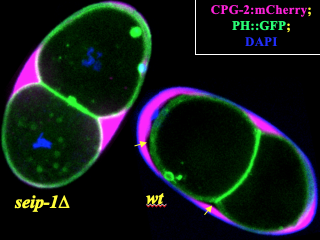Research Interests
Approximately ~ 10000 rare (or orphan) diseases have been identified in humans, and around 80% of these diseases are monogenic, while the molecular mechanisms and effective treatments for a majority of those diseases have not been clearly defined and developed. The nematode Caenorhabditis elegans contains orthologs of the majority of disease genes. Precision modeling of pathogenic gene variants of rare diseases in C. elegans has uncovered a better understanding of the cellular and molecular mechanisms as well as revealed novel therapies based on drug and genetic suppressor screens. In my lab, we aim to identify genetic suppressors of patient-specific alleles, including those associated with the mechanosensor PIEZO and the lipid-droplet protein SEIPIN, using C. elegans as a model. We will take advantage of CRISPR/Cas9 genome editing and whole-genome sequencing to conduct large genetic screens in a short time period. These screens will identify new interactors and genetic pathways that can suppress the phenotypes of the patient-specific missense alleles. Additionally, these studies will help determine the functions of these putative suppressors and their relationship with disease-associated genes, as well as their contributions to physiological processes in other model systems.
Research Directions
Mechanobiology
- Regulation of mechanosensors (including PIEZOs) by the cytoskeleton
- Relationship between mechanosensors (TACAN & PIEZOs) and fatty acid metabolism
- Mechanosensor membrane trafficking
Lipid Biology
- Seipin-mediated lipid metabolism and lipid transfer
- Lipid droplet (LD) morphology, and contacts between organelles (ER, mitochondria, and cortical granules)
Live Imaging and Cell Biology
- Establish high-resolution and temporal imaging pipeline
- Ca2+ and cytoskeleton imaging, and data analysis (MATLAB based pipeline)
Genetics, High-throughput Sequencing, and Bioinformatics
- Optimization of CRISPR/Cas9 gene editing
- Forward genetic and chemical screens
- Whole genome sequencing to identify single nucleotide variations (SNVs)
- RNA-seq to decipher the gene regulation network
